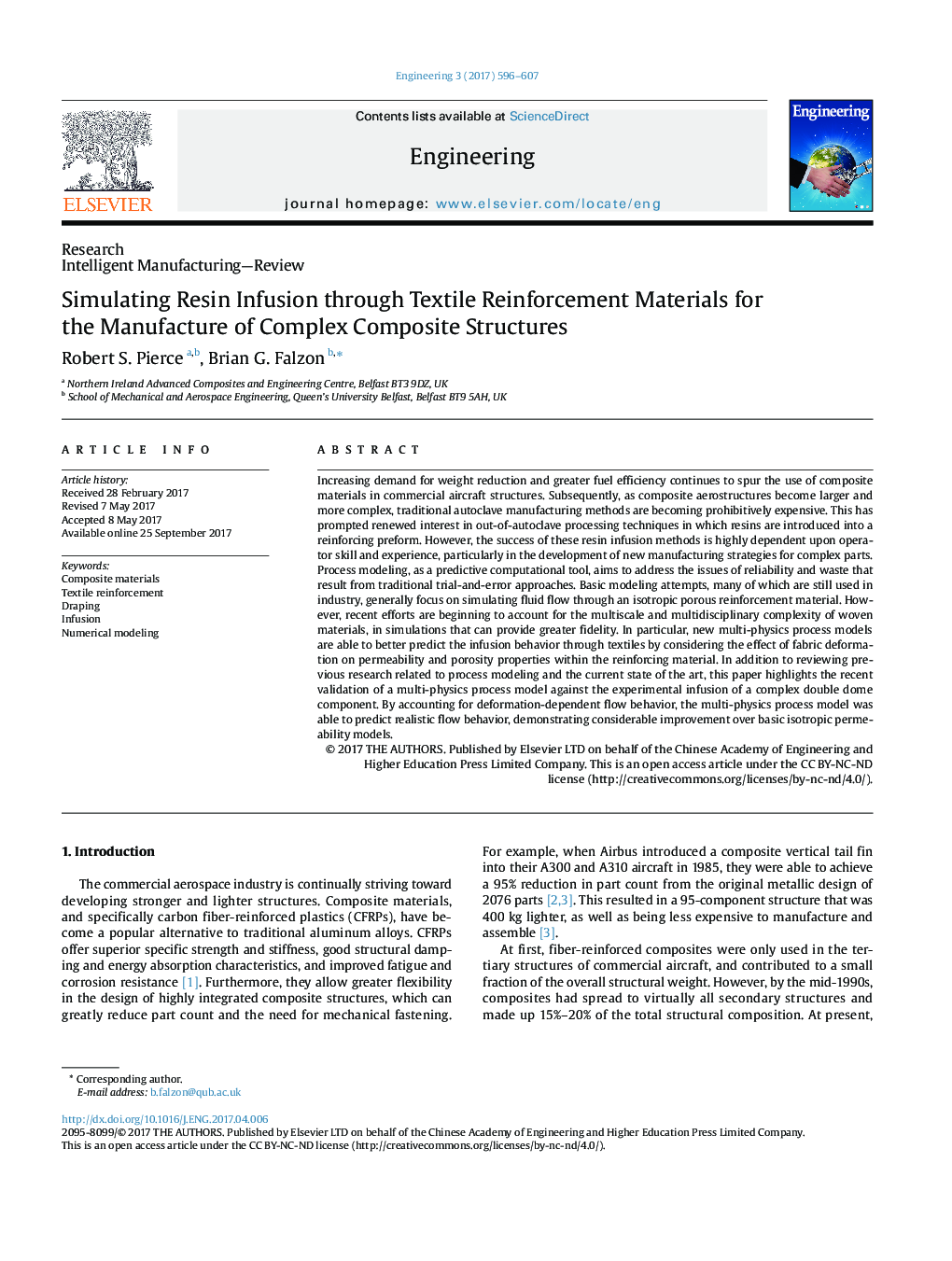| Article ID | Journal | Published Year | Pages | File Type |
|---|---|---|---|---|
| 6893432 | Engineering | 2017 | 12 Pages |
Abstract
Increasing demand for weight reduction and greater fuel efficiency continues to spur the use of composite materials in commercial aircraft structures. Subsequently, as composite aerostructures become larger and more complex, traditional autoclave manufacturing methods are becoming prohibitively expensive. This has prompted renewed interest in out-of-autoclave processing techniques in which resins are introduced into a reinforcing preform. However, the success of these resin infusion methods is highly dependent upon operator skill and experience, particularly in the development of new manufacturing strategies for complex parts. Process modeling, as a predictive computational tool, aims to address the issues of reliability and waste that result from traditional trial-and-error approaches. Basic modeling attempts, many of which are still used in industry, generally focus on simulating fluid flow through an isotropic porous reinforcement material. However, recent efforts are beginning to account for the multiscale and multidisciplinary complexity of woven materials, in simulations that can provide greater fidelity. In particular, new multi-physics process models are able to better predict the infusion behavior through textiles by considering the effect of fabric deformation on permeability and porosity properties within the reinforcing material. In addition to reviewing previous research related to process modeling and the current state of the art, this paper highlights the recent validation of a multi-physics process model against the experimental infusion of a complex double dome component. By accounting for deformation-dependent flow behavior, the multi-physics process model was able to predict realistic flow behavior, demonstrating considerable improvement over basic isotropic permeability models.
Related Topics
Physical Sciences and Engineering
Computer Science
Computer Science (General)
Authors
Robert S. Pierce, Brian G. Falzon,
